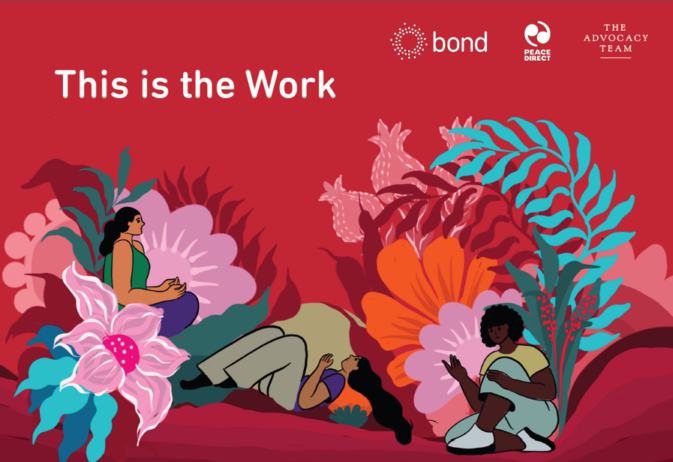Redefining visual representations of developing countries by INGOs – part one
This blog is part one of two. Part two will be released in March.
I feel like they just focus on the negative story areas. They like a certain sewage area. You will get frequent visitors when you live near sewage with poor drainage.
Kenya’s Kibera slums resident experience with INGOs.
Numerous scholars have put forth a range of areas that require decolonisation in Africa.
The concept of decoloniality and the movement surrounding decolonisation has piqued significant academic interest in fields such as education, culture, language, mindset, and religion, as well as the humanitarian and development sectors. However, the scope of decolonisation has also extended to the aid sector and the role played by International Non-Governmental Organisations (INGOs) in shaping visual representations of developing countries.
The portrayal of issues, individuals, and locations from the Global South has been a cause for concern, leading to criticisms and debates over the years. Visual representation has a profound impact on shaping our perceptions of developing countries, but often, such depictions have been tainted by colonial narratives and stereotypes.
It is in light of this context that I am motivated to explore the aspect of decolonising visual representation of developing countries by INGOs, with a particular focus on Kenya’s Kibera informal settlements.
My research has been inspired by the “Who Owns the Story” research conducted by Amref Health Africa in partnership with University of East Anglia (UEA) and University of the Arts London (UAL), as well as my deep admiration for the various African communities I have had the opportunity to work with. The resilience and determination of these communities to establish a voice on their own terms has been a source of inspiration for me.
A colonial legacy
Through a thorough examination of relevant data, my study illuminated the intricate ways in which the colonial legacy continues to exert a profound influence on how developing countries are represented visually. In as much as the developing states have independence, legal instruments, and goodwill, they still perceive developing countries as a problem. This is usually presented through images of struggle, degradation and detests of an African person.
Binyavaga Wainaina has elaborated this in his satirical essay ‘How to write about Africa’. In his book, he presents the dominant Western worldview towards Africa where he notes that characters must always include starving Africans, who wander the refugee camps near naked, children with flies on their eyelids and potbellies, looking utterly helpless, waiting for the benevolence of the rich nations.
In the realm of international development, INGOs play a crucial role in shaping public perception of developing countries and the issues they face. Unfortunately, their visual representation often perpetuate harmful stereotypes and reinforce the colonial gaze. In these blogs, I explore my research objectives by delving into the techniques used by INGO to represent developing countries, the impact of these techniques and importance of decolonising these visual representations, using the case of Kibera informal settlements.
What are the techniques used by INGOs to represent residents of Kibera?
I had the privilege to have an in depth discussion with 40 residents of Kibera through a focus group discussion.
They enumerated narratives by INGOs to obtain images from individuals, with one of the techniques involving the use of false promises, as illustrated in the statement below.
My mother was photographed when she was extremely ill. The organisation informed me that the photo would be utilised to raise funds for my mother’s hospital expenses. They returned after several months to capture more images and provided us with a few items like cooking oil, flour, and bread. However, they never provided medical assistance for my mother.
Representing the informal settlement predominantly through images of poverty and degradation echoes a widespread criticism of specific fundraising approaches. This sentiment is evident in the following statements:
We have both clean and dirty areas. NGOs should not exclusively concentrate on the unsanitary sections. They should highlight both areas to demonstrate the developmental progress we have experienced.
I feel like they just focus on the negative story areas. They like a certain sewage area. You will get frequent visitors when you live near sewage with poor drainage.
Kibera slums resident experience with INGOs
The problem is that portrayal of these communities in one way or a single picture to represent an entire complex rather than all round can lead to oversimplification and misrepresentation. Nigerian author Chimamanda Ngozi Adichie has famously spoken about the “single story” problem, where portraying a place or people through a singular lens erases their complexity and diversity.
The use of coercion, including promises made to parents or guardians to gain access to their children’s images, is a concerning ethical issue in humanitarian and development work. Dishonoring commitments lead to rebellion in providing information in the future.
Some participants highlighted other techniques such as setting-up scenes to achieve the organisation’s goal. One respondent narrated how they were convinced by an INGO to tell their schoolchildren to display dirty drinking water in bottles, which was not the real case. The school had a clean and safe drinking water but the organisation wanted photos that told a different story. Another participant described how they were told to hide valuable items like gas cooker and television in her house.
Creating such scenes in communities to show vulnerability can be highly problematic and ethically questionable. It can reduce their experiences to mere props for storytelling, disregarding their dignity and agency of the individuals portrayed.
Category
News & ViewsThemes
Communications



